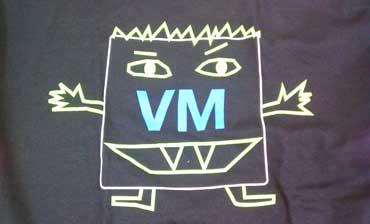VMware Confirms vSphere 5 Licensing Changes, Partners Rejoice

|
|---|
As CRN reported on Tuesday, VMware has boosted the vRAM entitlement in all versions of vSphere, doubling vSphere Enterprise from 32GB to 64GB and Enterprise Plus from 48GB to 96GB. VMware has also capped the amount of vRAM per virtual machine that counts against a customer's license entitlement to 96GB, paving the way for virtualization of mission critical business applications.
"With these increased vRAM entitlements, hardly any customer will be impacted by higher licensing costs upon upgrading to vSphere 5," Bogomil Balkansky, vice president of product marketing at VMware, said in a Wednesday blog post announcing the changes.
In vSphere 5, VMware is moving from a licensing model based on the number of server cores to one that's based on the amount of vRAM, or memory that customers allocate to virtual machines on the host. Blogger Derek Seaman reported last Thursday that VMware was planning to boost its vRAM allotments for vSphere 5 customers.
For VMware partners, the decision is a welcome move that should help restore momentum to deals that customers had put on hold after VMware first unveiled vRAM licensing on July 12.
ICI, a Marlborough, Mass.-based solution provider, sold a $400,000 VMware enterprise licensing agreement to a large pharmaceutical customer just prior to the vSphere 5 and vRAM unveiling. But Jamie Shepard, executive vice president of technology solutions at ICI, quickly realized that the ELA he'd sold wouldn't cover the customer's needs because it had been calibrated based on CPU sockets instead of RAM.
"We had to ask them buy more licensing for an ELA that took two months to close," Shepard told CRN. "The customer was going to stop all projects."
VMware CEO Paul Maritz last month said 95 percent of VMware customers wouldn't have to pay more as a result of the vSphere 5 changes, but Shepard disagrees with that figure on the grounds that many customers tend to over-allocate RAM on virtual machines.
However, Shepard expects that customer trepidation and anger will evaporate in the wake of the latest changes. "This is huge, and it makes a lot of sense," he said.
VMware is also calculating vSphere 5 licensing costs based on a 12-month average of consumed vRAM as opposed to a high water mark. "Short-lived 'spikes' will increase the 12 month average a little but a customer will not be required to pay for them in perpetuity," Balkansky said in the blog post.
This was another sore spot for customers and partners because it would have penalized them for vRAM consumption spikes that occurred during testing and development. Again, VMware partners welcome this move and the fact that VMware listened to their concerns.
"The changes are significant, not just in terms of the vRAM entitlement bump, but also the flexibility parameters and having licensing costs accrue on a 12 month rolling average," Keith Norbie, vice president and CTO at Nexus Information Systems, a Minnetonka, Minn.-based solution provider.
The 96GB cap is especially important because it'll allow customers to take full advantage of vSphere 5 and build the so-called "Monster VMs" that VMware has been touting, according to Norbie.
"The fact that they listened to customers and adjusted sets a precedent -- I don't know of any vendor that has done this," he said.